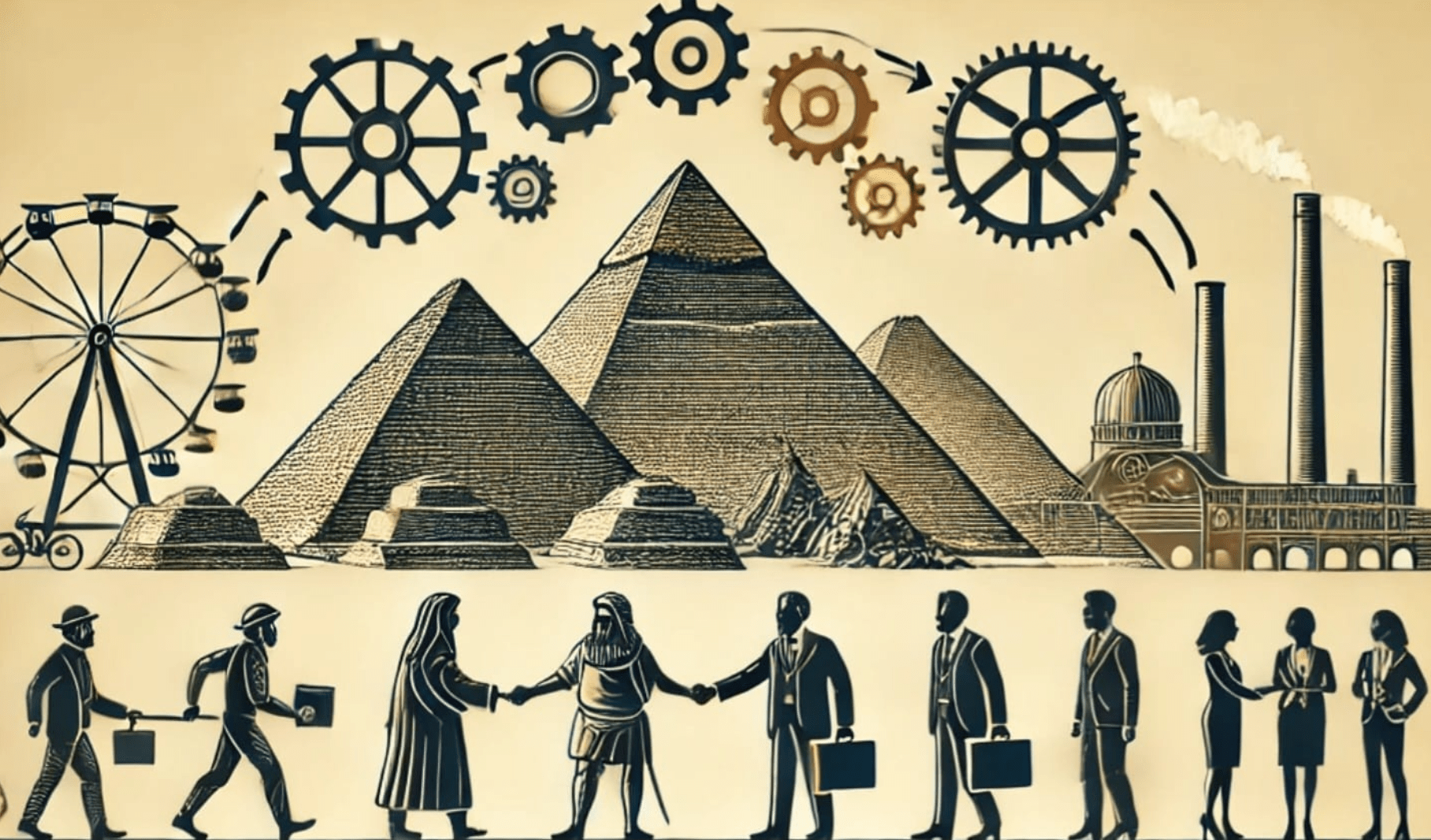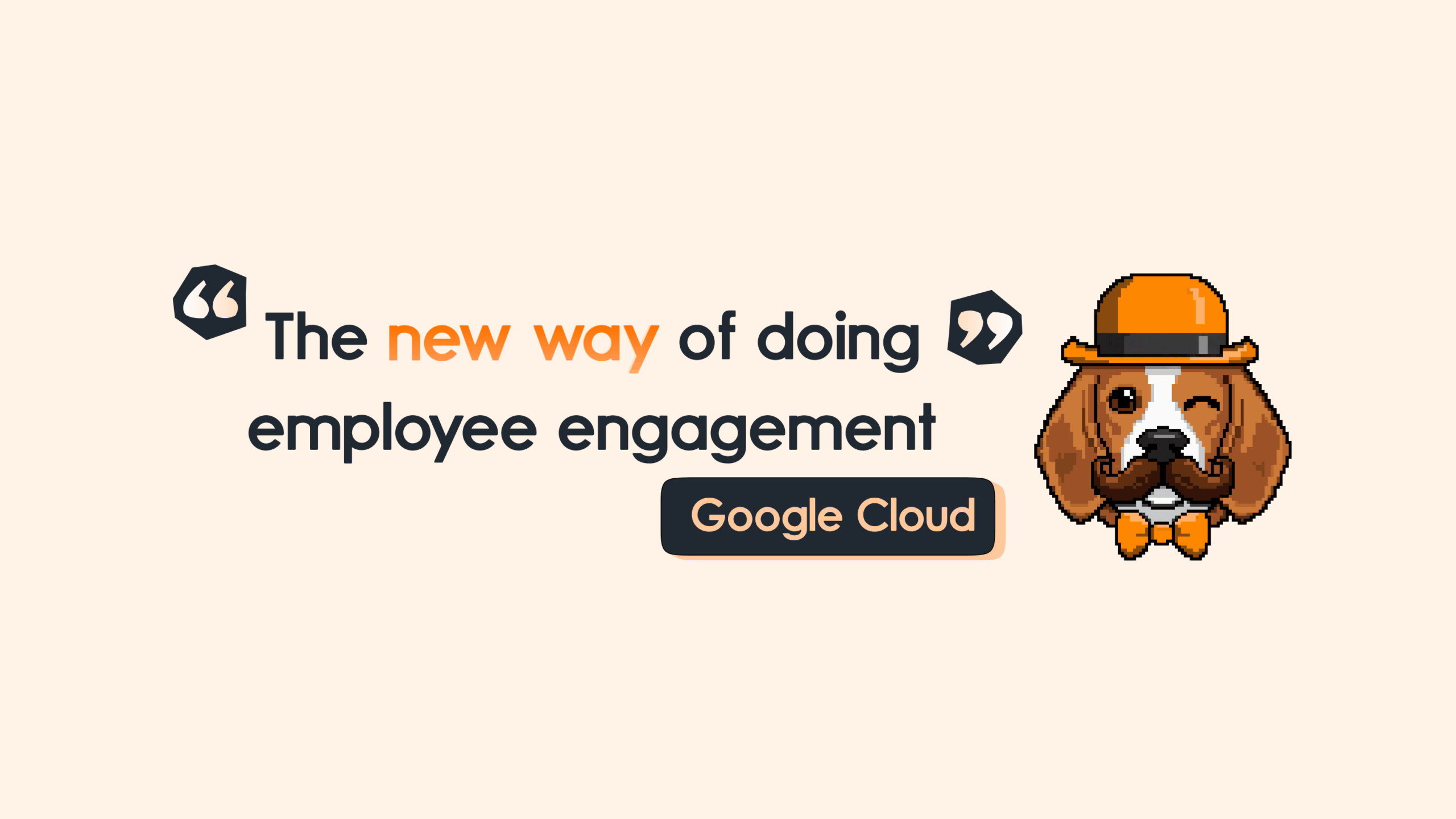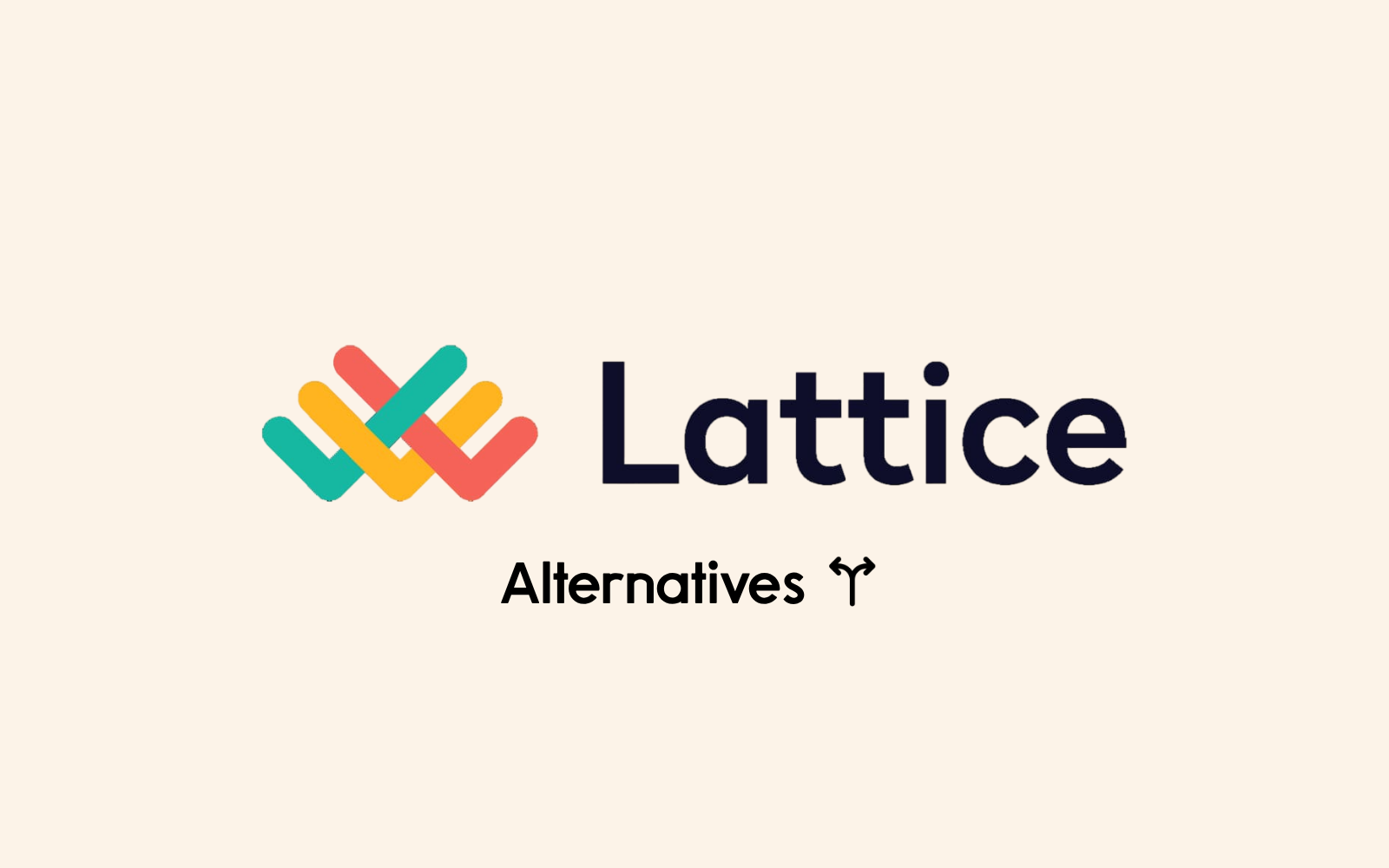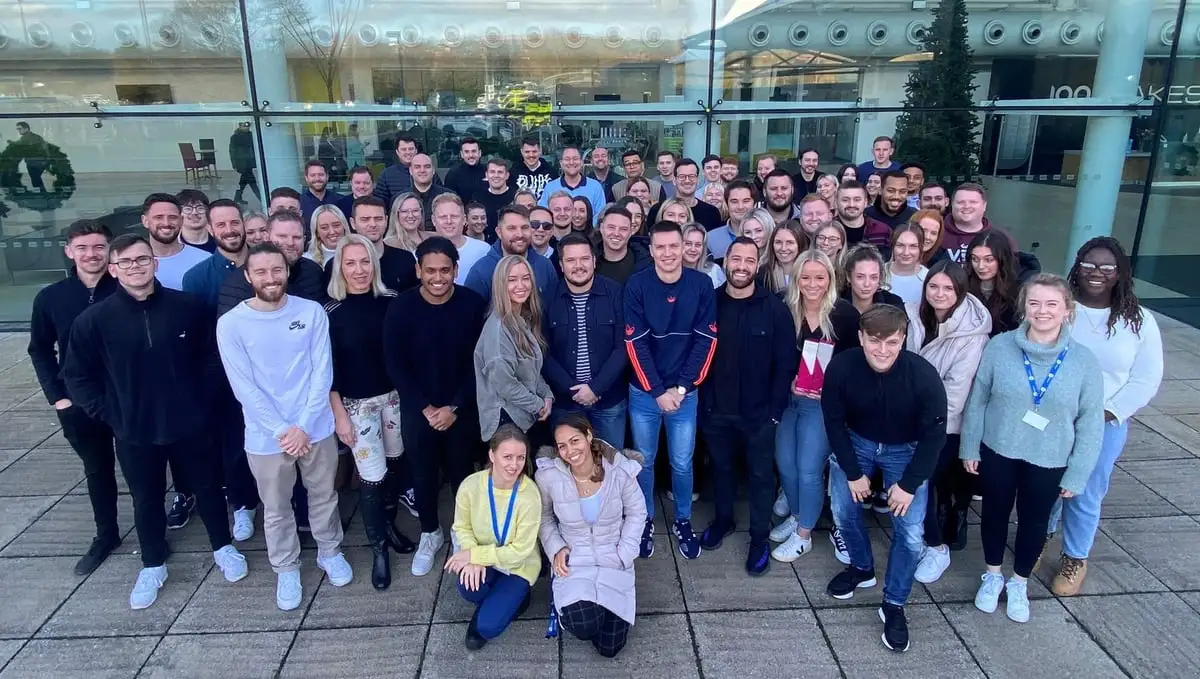Employee engagement is often seen as a modern concept, tied to today’s corporate culture and workplace strategies. However, the roots of engagement—how leaders and societies have understood the importance of workers’ morale, loyalty, and productivity—stretch back through the ages. Long before we had KPIs, or performance reviews, engagement was about something more fundamental: human connection, purpose, and belonging.
This journey through history reveals the evolution of employee engagement, and though unnamed, has been a key driver of work for centuries. And as we look towards the future, we can see how the core needs that once shaped our ancestors’ work lives are still shaping engagement today. Let’s explore the evolution of engagement from ancient times to where it’s headed next.
The Ancient Foundations: Work as Identity and Duty
In the earliest human societies, work was a matter of survival, but it was also deeply connected to identity and community. For example, in Ancient Egypt, workers who built the pyramids were given food, shelter, and respect, especially if they were skilled artisans. Work was not just about survival—it was about contributing to something greater than oneself.
In Ancient Greece and Rome, work was seen as a civic duty. Public labourers and soldiers understood that their work supported the greater good of their society. This sense of purpose and collective responsibility laid the early foundations for what we now consider employee engagement: feeling part of something larger, with a clear sense of meaning and connection.
The Mediaeval Era: Guilds and Worker Autonomy
During the Middle Ages, the rise of guilds marked a significant step in worker engagement. These organisations provided training, regulation, and community for craftsmen across Europe. But more than that, guilds gave workers a path to mastery and recognition within their field, creating a sense of pride and belonging.
Being part of a guild meant more than having a job. It offered security, camaraderie, and respect. Guild members didn’t just work for wages; they were contributing to their craft and community, much like today’s workers who seek purpose beyond pay. The principles of autonomy, development, and recognition within these guilds closely resemble the core elements of engagement today.
The Industrial Revolution: Efficiency Over Engagement
The Industrial Revolution in the 18th and 19th centuries saw the advent of factories and mass production, transforming work into something much less personal. Workers became replaceable units in a vast production process, often toiling under harsh conditions. The human connection to work, so strong in earlier times, was overshadowed by the drive for efficiency and profit.
During this period, engagement plummeted. Workers’ needs for recognition, autonomy, and purpose were largely ignored, leading to widespread dissatisfaction. Trade unions rose in response, advocating for better conditions and pay, but the deeper emotional and psychological connection to work was often left untended.
The Early 20th Century: Scientific Management vs. Human Relations
In the early 1900s, Frederick Taylor’s Scientific Management aimed to maximise productivity by treating workers as components in a larger machine. While this approach improved efficiency, it overlooked the human aspect of work, leading to further disengagement.
However, during the 1920s and 1930s, the Hawthorne Studies, led by Elton Mayo, began to highlight the importance of the social and psychological aspects of work. These studies showed that workers were more productive when they felt valued and part of a supportive environment. This marked the start of the Human Relations Movement, which recognised that engagement was about more than just financial rewards—it was about fulfilling deeper human needs.
The Post-War Era: The Rise of Employee Satisfaction
Following World War II, the concept of employee satisfaction became a focal point for organisations. Companies began to recognise that happy, well-treated workers were more productive. Maslow’s Hierarchy of Needs, introduced in 1943, provided a framework for understanding human motivation, suggesting that once basic needs like pay and safety were met, workers sought higher levels of satisfaction, including belonging, esteem, and self-actualisation.
However, employee satisfaction wasn’t the same as engagement. While satisfied employees were content, truly engaged employees were those who were emotionally invested in their work and the success of the organisation.
Late 20th Century: The Birth of Employee Engagement
The term “employee engagement”, as we know it today, began to take shape in the 1990s, when academic William Kahn defined it as the extent to which employees are psychologically present in their work. Kahn’s research identified three critical elements: meaningfulness, safety, and availability. His work helped establish that engagement was not just about being happy or satisfied but about being fully involved, enthusiastic, and committed to one’s work.
During this period, companies began to measure engagement more formally, recognising its impact on productivity, retention, and overall business success.
The Future of Engagement: Back to Basics
When our first ancestor was imagining what the world might look like today, do you think she would recognise what ‘work’ has become? The idea of sitting at a desk, communicating through screens, and producing intangible results would likely seem alien to her. But one thing she would recognise is the human need for connection, purpose, and recognition.
From the very beginning, work has been about survival, yes, but also about meaning. Building for the future, contributing to something larger than oneself, and being part of a community are deeply human desires that haven’t changed in thousands of years. Yet, somewhere along the way, we’ve lost sight of these basics. We’ve complicated the workplace, layering on structures and systems that often make it harder, not easier, to feel fulfilled.
Rediscovering What Matters
As we look towards the future, the key to employee engagement lies not in adding more complexity, but in returning to the fundamentals that have driven people for centuries:
- Purpose: Workers throughout history have been driven by a sense of meaning, whether they were building cathedrals or crafting tools for their communities. Today’s employees want to feel that same sense of connection to their work. The future of engagement will prioritise reconnecting employees to the why behind their work.
- Recognition: Our ancestors would have celebrated each other’s achievements through shared stories and rituals. In today’s workplaces, recognition should feel just as personal and meaningful—woven into the daily fabric of work.
- Autonomy: Early humans thrived when they had the freedom to make decisions and take responsibility for their contributions. Likewise, modern humans need the same sense of ownership and trust to feel truly engaged.
- Community: Work has always been a communal experience, from ancient tribes to mediaeval guilds. Even as the nature of work changes, creating a sense of belonging and shared purpose remains essential.
A Return to Simplicity – Continuing the evolution of employee engagement
As we move forward, the future of work isn’t about adding more layers. It’s about peeling them back, returning to the simplicity of what work has always been about: people. The tools, technologies, and frameworks we build should serve to enhance that basic human connection, not overshadow it.
When we strip away the noise, what we’re left with is the same driving force that’s been there since the beginning—the desire to contribute, to be valued, and to be a part of something bigger than ourselves. In the end, engagement has always been about fulfilling these fundamental human needs. Perhaps the future isn’t so different from the past, after all.
We hope you’ve enjoyed this little exploration through time and how employee engagement has changed throughout history. The evolution of employee engagement continues! Who knows what’s next? Keep track of our blog to find out 👀









